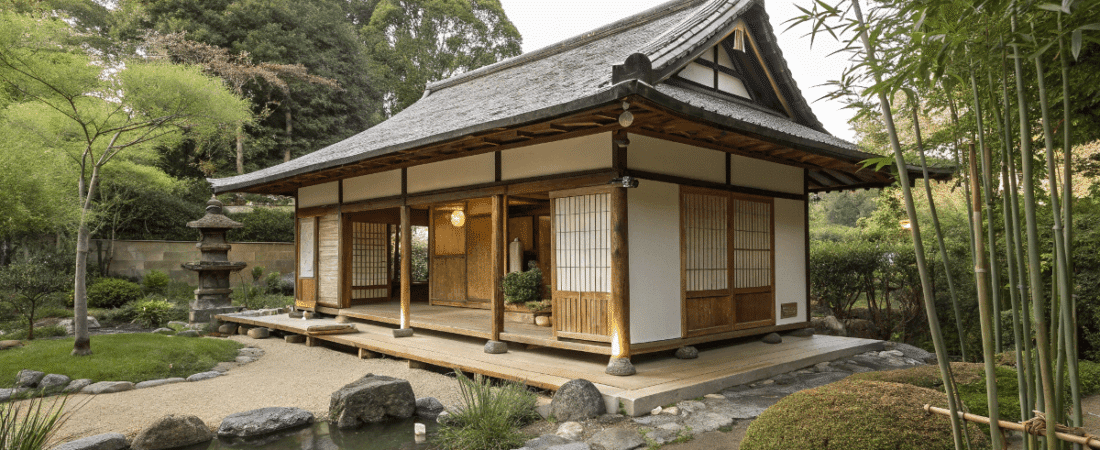Tiny houses Japanese style blend minimalism with functionality, creating cozy living spaces that are perfect for urban or rural settings. These homes often feature traditional elements like tatami mats and sliding doors, embracing simplicity in design. Whether you’re looking for inspiration or just curious about this unique way of living, tiny houses in Japanese style offer a glimpse into a lifestyle that values space and serenity.
- Traditional Techniques in Modern Tiny Homes
- Zen Elements: Creating Tranquility in Small Spaces
- Community and Tiny Living: Shared Spaces in Japan
- Embracing Nature: Indoor-Outdoor Connections
- Minimalist Aesthetics: The Essence of Japanese Tiny Houses
- Sustainable Living: Eco-Friendly Features of Tiny Houses
- Efficient Space Utilization in Tiny Living
- The Role of Light in Japanese Architecture
- Challenges and Solutions in Tiny House Living
- Cultural Influences on Tiny House Design
Traditional Techniques in Modern Tiny Homes
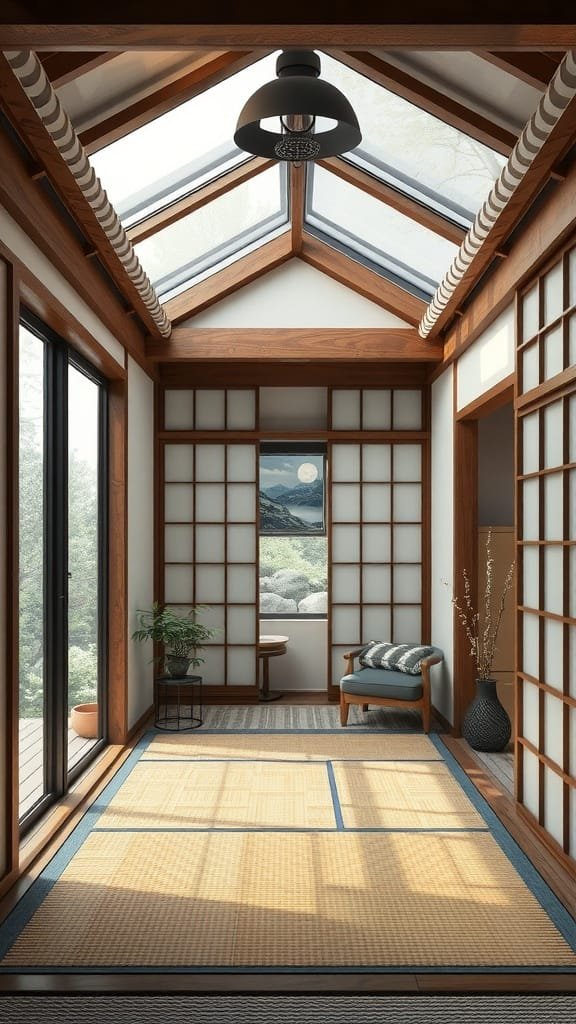
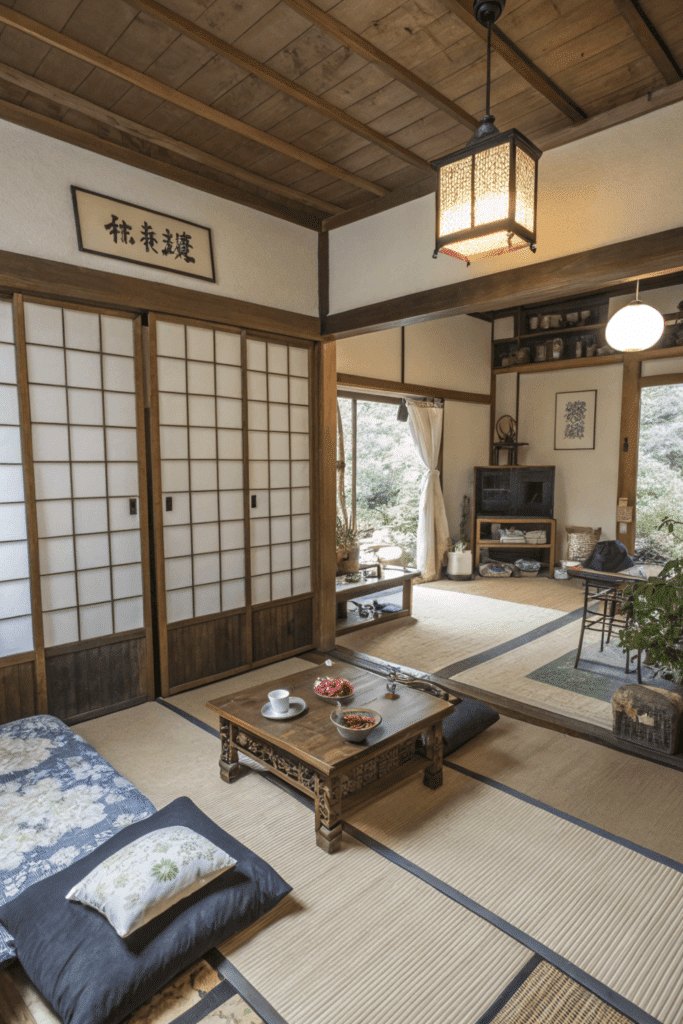
Tiny houses Japanese style combine old and new designs beautifully.
This image shows a calm space filled with natural light.
The wooden beams and sliding doors reflect traditional Japan tiny home design.
Large windows bring in the outside world, showing nature.
The tatami mat adds comfort and warmth to the room.
This setup encourages peace and simplicity.
It’s a perfect example of how tiny houses Japan can feel spacious.
Using natural materials connects us to the environment.
Incorporating these techniques makes modern living cozy and stylish.
Zen Elements: Creating Tranquility in Small Spaces
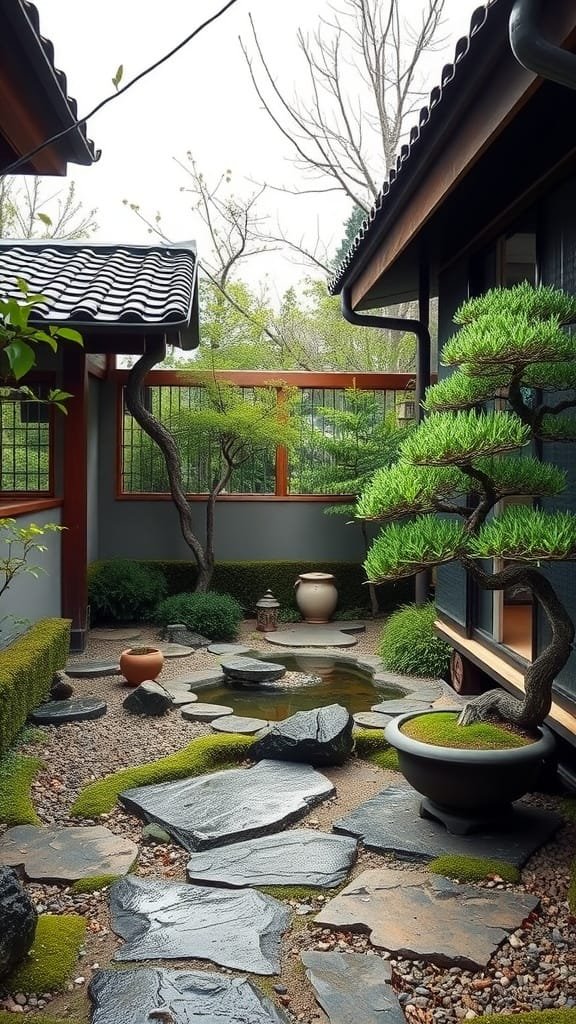
Tiny houses Japanese style focus on simplicity and harmony.
The image shows a peaceful garden.
It features smooth stones, green plants, and a calming pond.
This space reflects the essence of tiny houses Japan.
The bonsai tree and moss add charm.
Every element is carefully placed to create a serene feel.
Zen gardens invite relaxation and reflection.
In tiny houses Japanese style, nature plays a key role.
These spaces encourage mindfulness and peace.
Designing a tiny home can benefit from such elements.
Consider adding plants, stones, and water features.
These additions foster tranquility and balance.
Community and Tiny Living: Shared Spaces in Japan
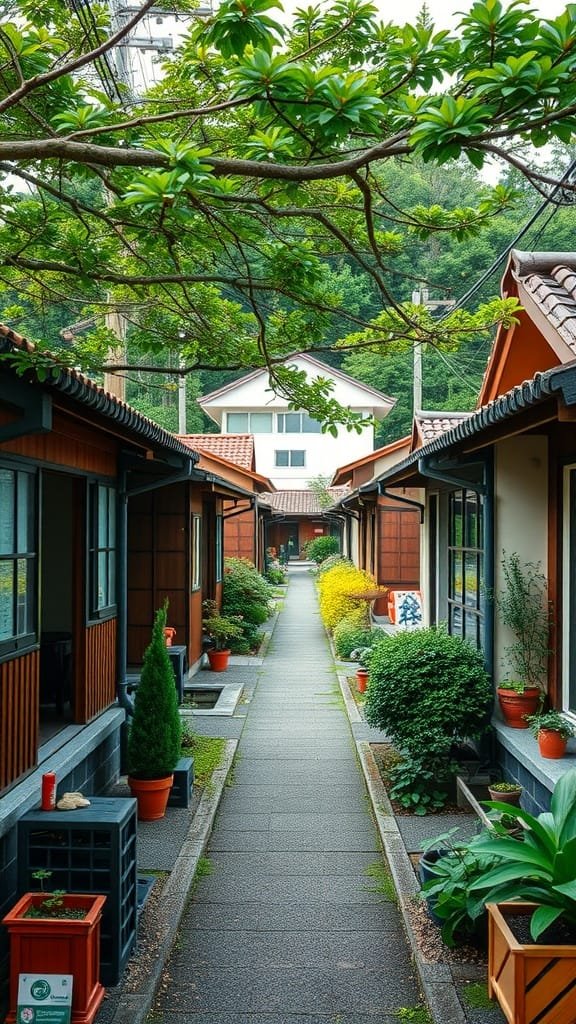
Tiny houses Japanese style create a unique vibe in Japan.
The image shows a lovely pathway lined with colorful plants and tiny homes.
Each house has its own charm but shares a communal atmosphere.
This setup encourages neighbors to connect and enjoy life together.
Living in tiny houses Japan means enjoying more shared experiences and less isolation.
People can gather for meals, share tools, or just chat in the garden.
Many tiny homes in Japan come with shared spaces that encourage community.
It’s a great way to make friends and support one another.
These tiny houses Japanese style are not just homes; they are part of a lifestyle.
They value simplicity and togetherness.
This community-focused living is appealing, especially in busy cities.
Embracing Nature: Indoor-Outdoor Connections
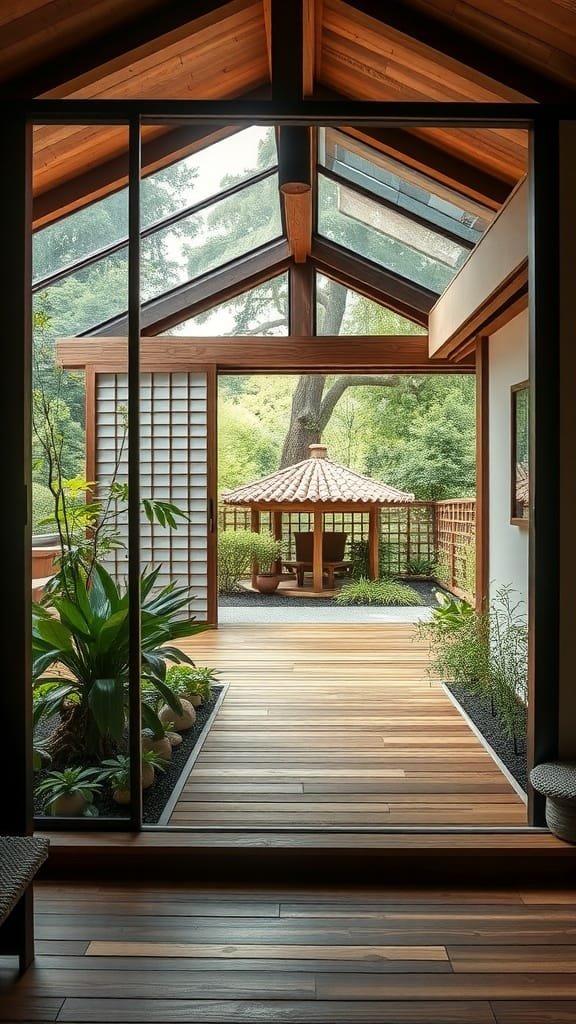
Tiny houses Japanese style beautifully connect indoor and outdoor spaces.
This image shows a seamless flow between the living area and the garden.
The large windows invite nature inside.
Sunlight streams in, making the space feel open.
Wooden elements create warmth and a cozy feel.
Plants thrive in this setup, adding life to the home.
Stepping outside, a peaceful area awaits.
This connection highlights how tiny houses Japan focus on harmony with nature.
Simple structures lead to a calming lifestyle.
Choosing tiny houses Japanese style means embracing a life close to nature.
Minimalist Aesthetics: The Essence of Japanese Tiny Houses
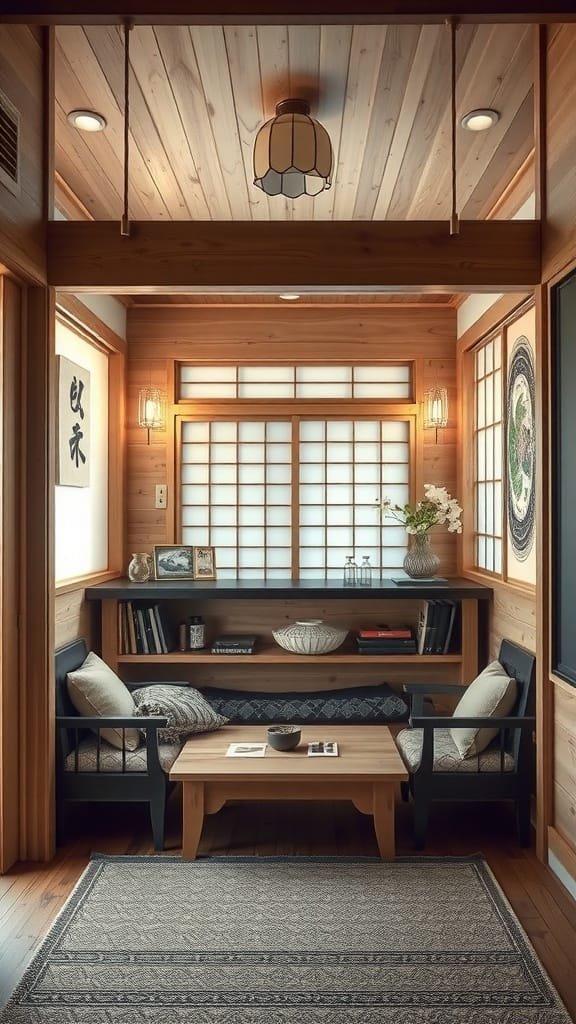
Tiny houses Japanese style offer a unique approach to living.
This image captures the beauty of such a space.
The warm wooden tones create a cozy feeling.
Simplicity is the heart of Japan tiny home design.
Notice the clean lines and minimal decor.
Every piece here serves a purpose.
Natural light fills the room, enhancing the atmosphere.
This harmony is a big part of tiny houses Japan.
It’s a great reminder that less can truly be more.
Living in a tiny house encourages us to appreciate what we have.
So, if you’re curious about tiny houses Japanese style, this style might be for you!
Sustainable Living: Eco-Friendly Features of Tiny Houses

Tiny houses Japanese style are not just cute; they’re eco-friendly too.
Imagine a cozy home with a green roof.
This helps keep the house cool and reduces heating costs.
In Japan tiny homes, you’ll often find solar panels on the roof.
These panels capture sunlight and turn it into energy.
Less reliance on non-renewable energy sources is a big win.
Water conservation is also a priority.
Many tiny houses Japan collect rainwater.
This water can be used for gardening or even for showers.
It’s a smart way to be eco-friendly.
Landscaping usually features native plants.
This choice requires less water and maintenance.
Plus, it attracts local wildlife.
Living in these tiny houses Japanese style encourages a simpler, more mindful lifestyle.
With less space, there’s less clutter.
It inspires us to own only what we really need.
In short, choosing tiny houses Japanese style is a step toward a greener future.
Efficient Space Utilization in Tiny Living
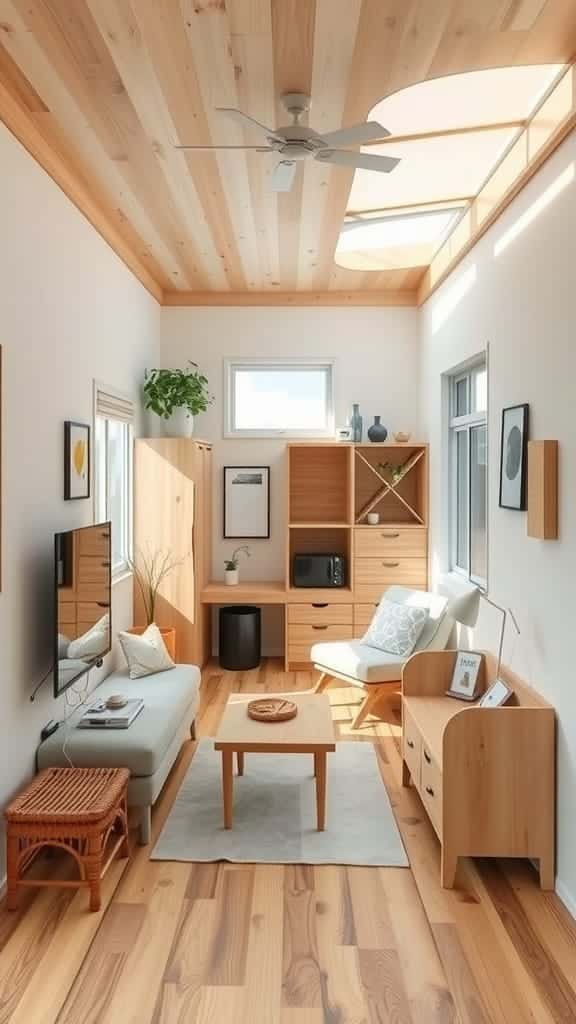
Tiny houses Japanese style show us how to make the most of a small space.
Look at the cozy living room in this tiny home.
It’s bright and welcoming. The wood ceiling adds warmth.
Everything seems to fit just right.
In tiny houses Japan, each piece of furniture serves a purpose.
Check out the smart storage options. They help keep things tidy.
There’s a sofa, a small table, and even a workspace.
Natural light pours in through the windows.
This makes the space feel larger and airy.
Living in a Japan tiny home can be simple and stylish.
The design focuses on comfort and utility.
Small changes can lead to big impacts.
For anyone wanting to downsize, tiny houses Japanese style are the way to go.
The Role of Light in Japanese Architecture
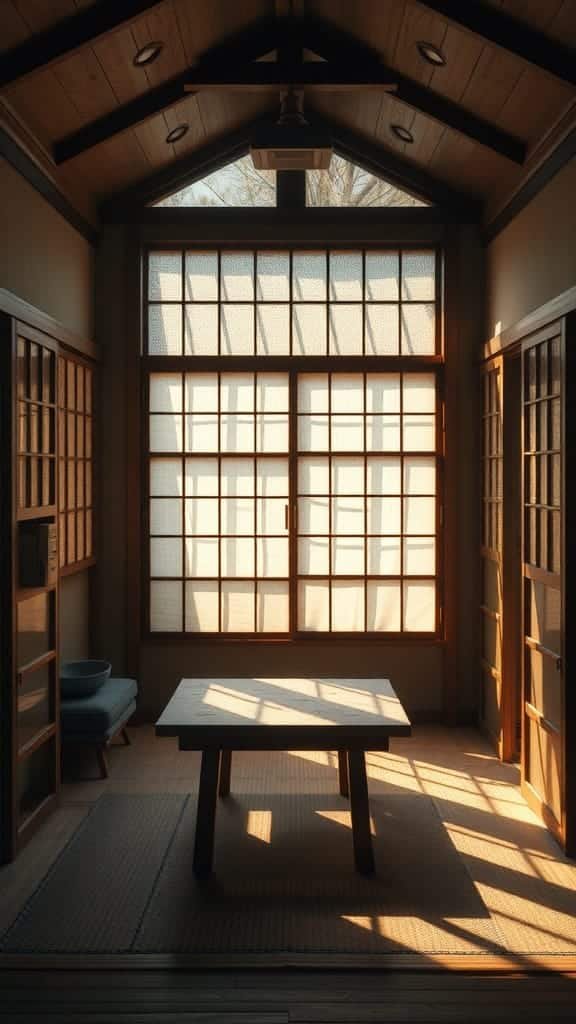
Tiny houses Japanese style often highlight the unique role of light.
This image shows a serene room with large windows.
Natural light pours in, creating a warm atmosphere.
The wooden beams and simple furniture add charm.
This design embraces the beauty of simplicity.
In tiny houses Japan, light is a key element.
It brings the outdoors inside, making spaces feel larger.
People can enjoy nature, even indoors.
Carefully placed windows create soft shadows.
This enhances the cozy feeling in the room.
Overall, light plays a vital role in tiny houses Japanese style.
Challenges and Solutions in Tiny House Living
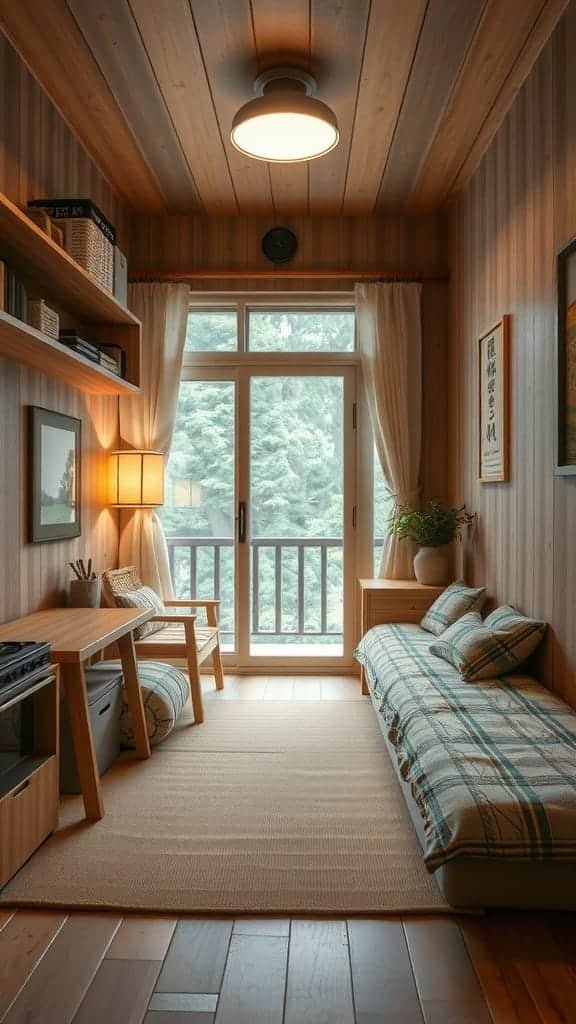
Tiny houses Japanese style can be cozy and charming.
Living in a small space comes with its own set of challenges.
One major issue is storage.
People often struggle to find places for their belongings.
Using multifunctional furniture helps.
For example, a sofa that turns into a bed can save space.
Another challenge is privacy.
In a tiny home, personal space can feel limited.
Using curtains or room dividers can create a sense of separation.
Finally, there’s the challenge of feeling cramped.
Making use of natural light can make a space feel larger.
Large windows, like those in tiny houses Japan, help brighten the room.
Incorporating plants also brings a fresh feel.
These solutions can help make tiny houses Japanese style feel more comfortable.
Cultural Influences on Tiny House Design
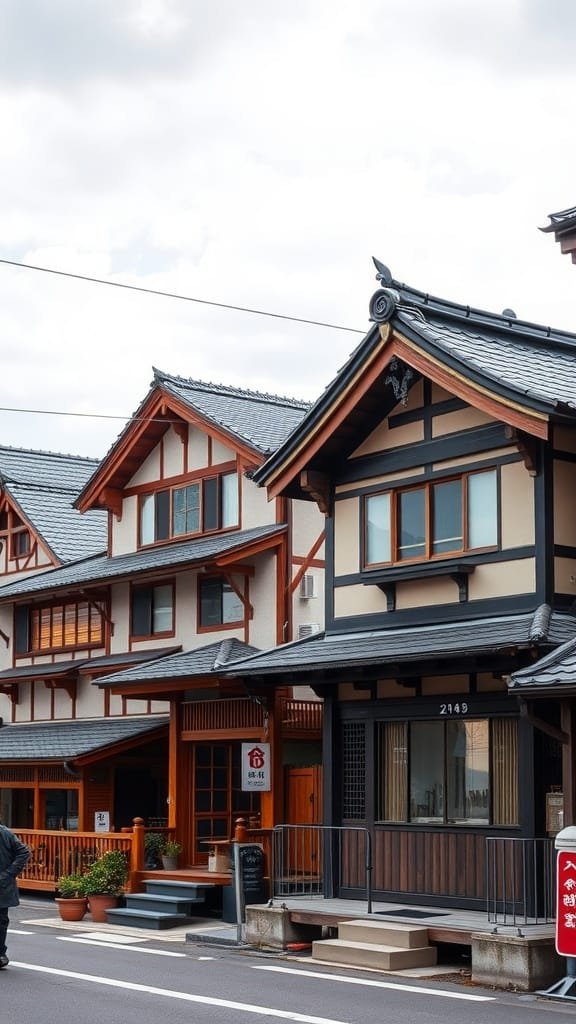
Tiny houses Japanese style are more than just small homes.
They reflect deep cultural values.
Japanese design focuses on simplicity and harmony with nature.
These tiny houses often feature wooden structures and traditional roofs.
The layout is practical and efficient, maximizing every inch.
Natural light is key in tiny houses Japan.
Large windows and sliding doors create a sense of space.
Many homes blend indoor and outdoor areas.
This encourages a connection to the environment.
Minimalist design is popular in Japan tiny home living.
Less clutter leads to a peaceful mind.
Communal living spaces are common too.
This highlights community ties in Japanese culture.
Overall, tiny houses Japanese style showcase a love for nature and simplicity.


